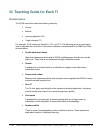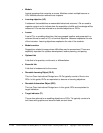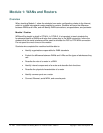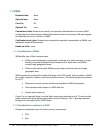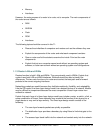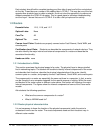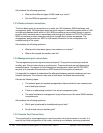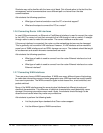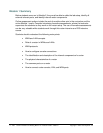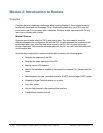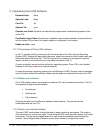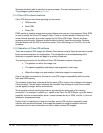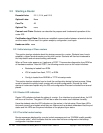
15 - 238 CCNA 2: Routers and Routing Basics v3.1 Instructor Guide – Module 1 Copyright © 2004, Cisco Systems, Inc.
Ask students the following questions:
• What are the different types of RAM used by a router?
• Can the RAM be upgraded in a router?
1.2.3 Router external connections
The three basic types of connections on a router are LAN interfaces, WAN interfaces, and
management ports. LAN interfaces allow the router segment network boundaries within a LAN
and reduce broadcast traffic within a LAN. WAN connections are provided through a service
provider which connects two or more distant site through the Internet or PSTN. The LAN and
WAN connections provide network connections through which frames are passed. The
management port provides an ASCII or text-based connection for the configuration and
troubleshooting of the router.
Ask students the following questions:
• What are the three basic types of connections on a router?
• What is the console connection used for?
1.2.4 Management port connections
The management ports are asynchronous serial ports. They are the console port and the
auxiliary port. Not all routers have an auxiliary port. These serial ports are not designed as
networking ports. To prepare for initial startup and configuration, attach an RS-232 ASCII
terminal or a computer that emulates an ACSII terminal to the system console port.
It is essential for students to understand the difference between network interfaces and non-
network interfaces. The instructor may need to talk about the differences extensively.
Discuss the following topics:
• The network ports use network encapsulation frames while the non-network ports
are bit and byte oriented.
• There is no addressing involved in the serial management ports.
• The serial interface for management is asynchronous and the serial WAN interface
is synchronous.
Ask students the following questions:
• Which port is preferred for troubleshooting and why?
• Do all routers have an auxiliary port?
1.2.5 Console Port Connections
The console port is a management port used to provide out-of-band access to a router. It is
used for the initial configuration of the router, monitoring, and disaster recovery procedures.




